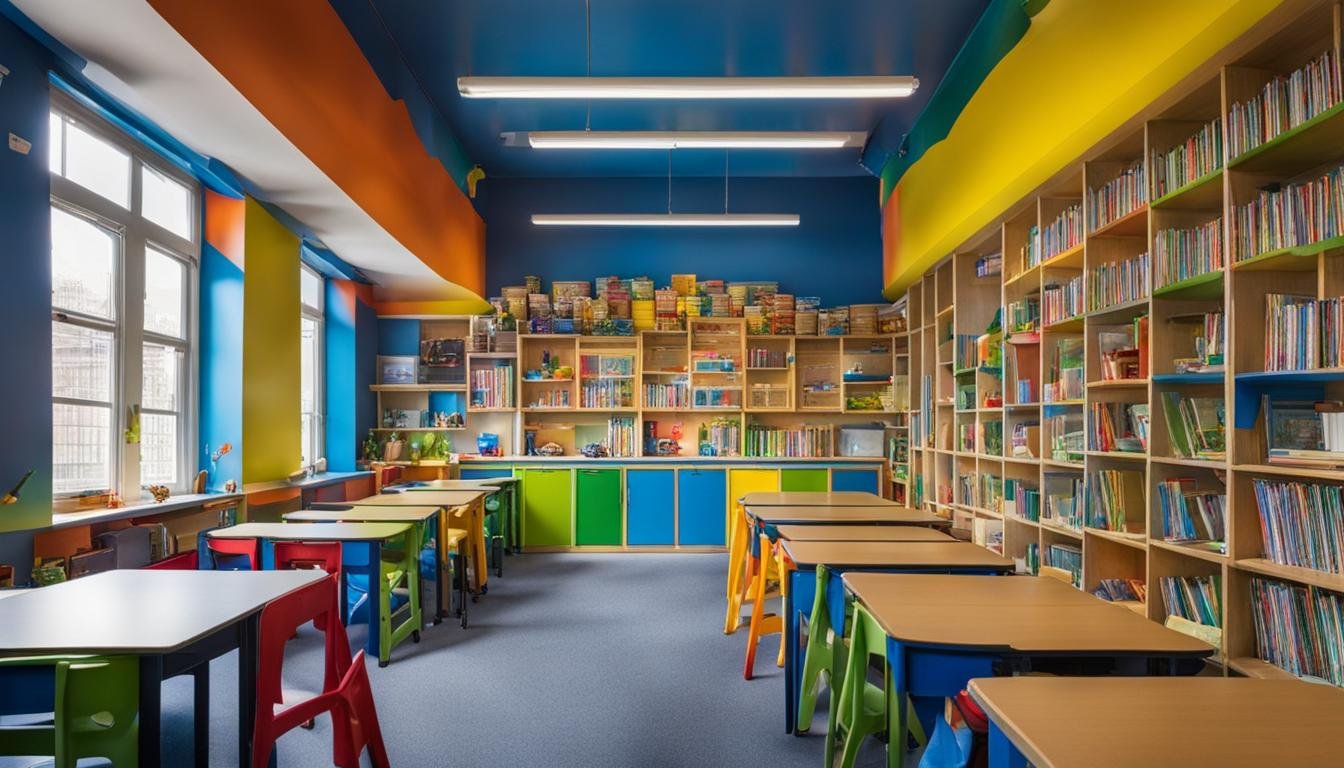How does color affect learning and behavior?
Have you ever wondered how the colors around us impact our ability to learn and behave? We often underestimate the power that color holds in influencing our cognitive functions, emotions, and behaviors, especially in educational settings. From attention and memory to creativity and communication, color plays a significant role in shaping our educational experiences. But how exactly does color affect our learning and behavior? Let’s explore the fascinating world of color psychology and its profound impact in educational settings.
Key Takeaways
- Colors have a significant impact on learning and behavior in educational settings.
- Different colors evoke specific emotional responses and affect cognitive functions.
- Warm colors like red, orange, and yellow can stimulate attention and engagement.
- Blue is associated with increased productivity and enhanced cognitive abilities.
- Understanding the emotional and behavioral effects of colors is essential for optimizing learning environments.
The Impact of Colors on Learning
Colors play a crucial role in learning by influencing attention and memory performance. Different colors have unique effects on our cognitive abilities and can greatly impact our learning outcomes.
Warm colors for enhanced attention
Warm colors like red, orange, and yellow have been found to maintain learners’ attention and stimulate active engagement. These colors are exciting and energetic, capturing the learners’ focus and promoting a sense of urgency. Red, in particular, has shown to enhance creativity, foster conversation, and improve performance and concentration.
“The use of warm colors in learning environments can create a vibrant and stimulating space that encourages curiosity and active participation.”
Blue for improved cognitive abilities
On the other hand, blue is associated with increased productivity, order, and enhanced cognitive abilities. This calming color promotes a sense of tranquility and stability, allowing learners to focus and process information more efficiently. Incorporating blue elements into the learning environment can help create a conducive space for concentration and critical thinking.
Yellow and orange for attention and communication
Colors like yellow and orange are attention-grabbing and energizing. They can build emotional energy and encourage communication among learners. Yellow, with its bright and vibrant nature, grabs attention and wakes up the nervous system, promoting alertness and enthusiasm. Orange, on the other hand, exudes warmth and positivity, creating an inviting learning atmosphere that fosters engagement and interaction.
By strategically using colors in learning environments, educators can optimize students’ cognitive abilities and promote effective learning outcomes. Creating a visually appealing and stimulating atmosphere can enhance attention, memory performance, and overall cognitive functioning.
The Role of Colors in Behavior
Colors play a significant role in influencing behavior and emotions. Different colors have distinct psychological effects on individuals, eliciting specific emotional responses that can impact behavior and mood.
Red: Energy, Strength, and Passion
The color red is associated with energy, strength, and passion. It has the power to stimulate movement, increase alertness, and evoke strong emotional responses. In educational settings, incorporating red elements can promote a sense of excitement and enhance motivation and engagement.
Blue: Calmness, Communication, and Perspective
Blue is known for promoting calmness, open communication, and extending perspective. It has a calming effect on individuals and is often used in classrooms or learning spaces to create a sense of relaxation and focused attention. The color blue can foster a conducive environment for collaboration and encourage students to share their thoughts and ideas.
Yellow: Happiness, Positivity, and Attention Grabber
Yellow is a vibrant color that exudes happiness, positivity, and life. It has the ability to grab attention and wake up the nervous system. Incorporating yellow elements in learning environments can create a cheerful atmosphere and enhance students’ mood, making them more receptive to learning and participation.
Other Colors and Their Psychological Effects
Colors like purple, orange, and green also have distinct psychological effects. Purple is associated with creativity, luxury, and spirituality, making it suitable for stimulating imaginative thinking. Orange is associated with enthusiasm and excitement, making it a great choice for generating energy and increasing motivation. Green symbolizes harmony, balance, and growth, offering a sense of calmness and tranquility.

Understanding the emotional and behavioral effects of colors is crucial for educators to create learning environments that promote desired behaviors and emotional states. By strategically using colors, educators can cultivate an atmosphere that enhances engagement, communication, and overall learning experience.
Conclusion
Throughout this article, we have explored the profound impact of color on learning and behavior in educational settings. Colors not only have the power to influence our cognitive functions but also evoke specific emotional responses that shape our behaviors and experiences. By understanding the role of color in learning and behavior, educators can create effective and engaging educational environments that optimize students’ cognitive abilities and foster desired behaviors.
When strategically employed, colors can enhance attention, improve memory performance, and stimulate creativity. Warm colors like red, orange, and yellow can energize learners, encourage active engagement, and promote communication. On the other hand, cool colors like blue can foster a sense of calmness, enhance productivity, and promote open communication. Each color carries its own psychological effects, and by harnessing their power, educators can create learning spaces that inspire and motivate students.
Furthermore, colors can create emotional connections that impact behavior. Red can incite energy and alertness, blue can cultivate a sense of tranquility, and yellow can evoke feelings of happiness and positivity. By utilizing the psychological effects of colors, educators can influence emotions, promote desired behaviors, and create supportive learning environments for students.
Understanding the role of color in learning and behavior is essential for educators to enhance educational experiences in the 21st century. By incorporating the right colors into educational settings, we can optimize cognitive functions, stimulate creativity, and foster positive emotional states. Let us embrace the power of color and create vibrant learning environments that inspire and empower our students.






